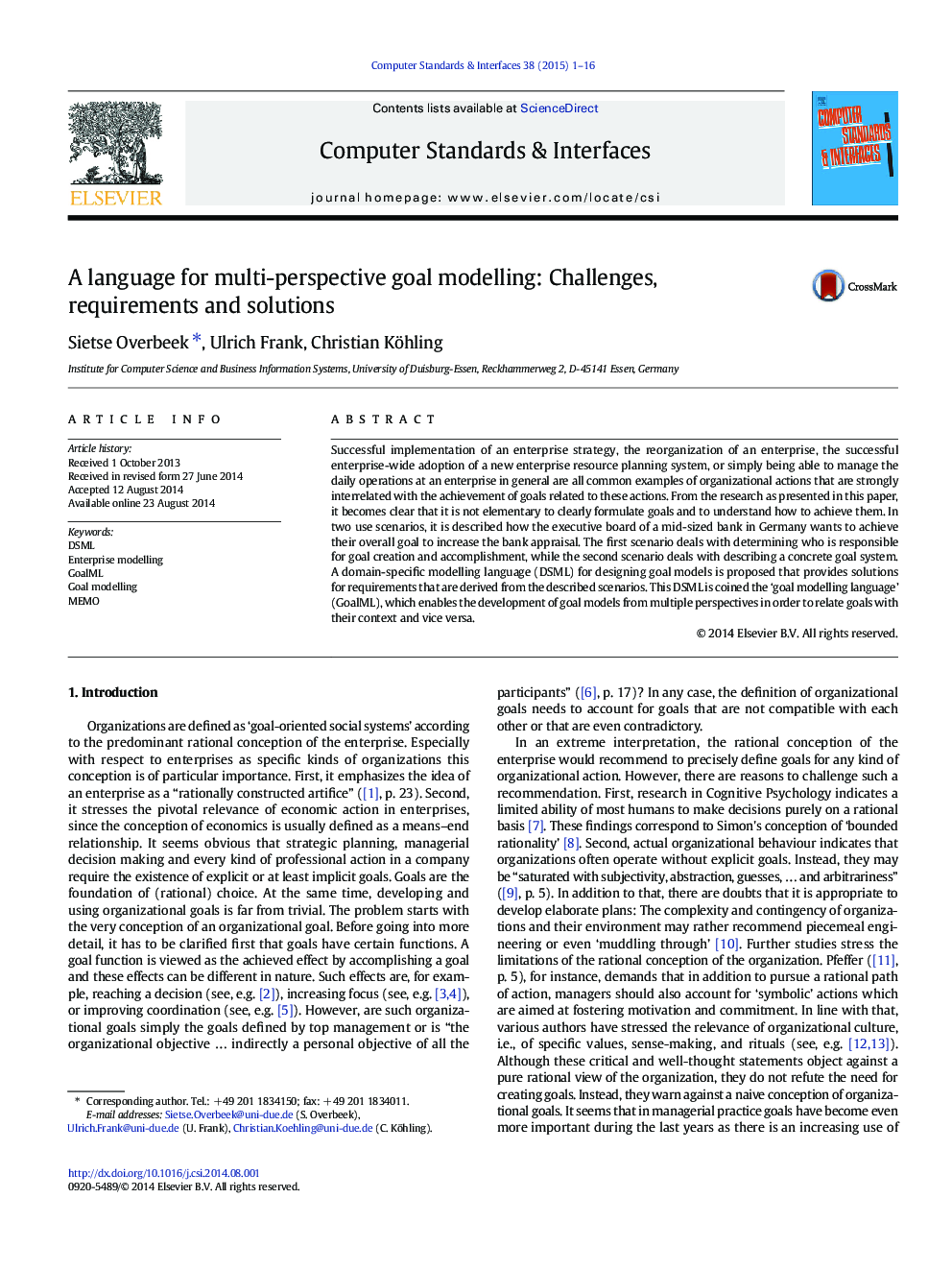| Article ID | Journal | Published Year | Pages | File Type |
|---|---|---|---|---|
| 454698 | Computer Standards & Interfaces | 2015 | 16 Pages |
•Formulating and understanding how to achieve organizational goals is not elementary.•Two use scenarios at a bank reflect goal modelling and analysis challenges.•A language for designing goal models that is called GoalML is proposed.•GoalML provides solutions for requirements that are derived from the use scenarios.•Goals are related to their context by modelling them from multiple perspectives.
Successful implementation of an enterprise strategy, the reorganization of an enterprise, the successful enterprise-wide adoption of a new enterprise resource planning system, or simply being able to manage the daily operations at an enterprise in general are all common examples of organizational actions that are strongly interrelated with the achievement of goals related to these actions. From the research as presented in this paper, it becomes clear that it is not elementary to clearly formulate goals and to understand how to achieve them. In two use scenarios, it is described how the executive board of a mid-sized bank in Germany wants to achieve their overall goal to increase the bank appraisal. The first scenario deals with determining who is responsible for goal creation and accomplishment, while the second scenario deals with describing a concrete goal system. A domain-specific modelling language (DSML) for designing goal models is proposed that provides solutions for requirements that are derived from the described scenarios. This DSML is coined the ‘goal modelling language’ (GoalML), which enables the development of goal models from multiple perspectives in order to relate goals with their context and vice versa.
